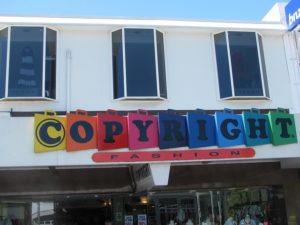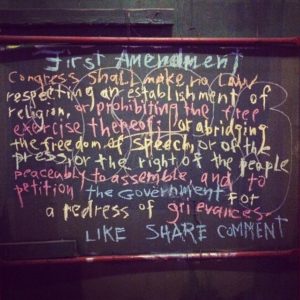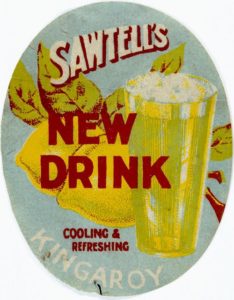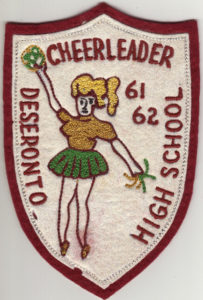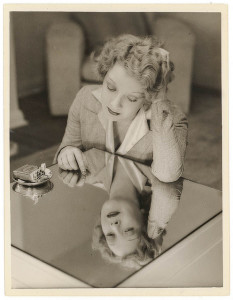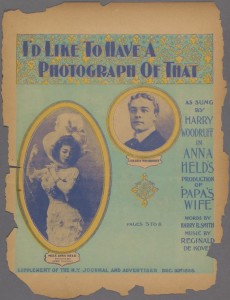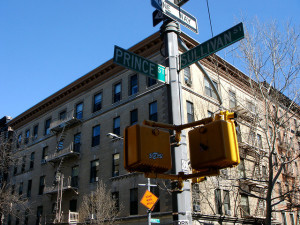Is providing a hyperlink to a work protected by copyright, which was published online without the authorization of the right holder, an infringement of copyright under European Union law? In order to answer this question, the European Court of Justice (ECJ) had to decide whether providing such a hyperlink is a communication to the public within the meaning of Article 3(1) of Directive 2001/29 on the harmonisation of certain aspects of copyright and related rights in the information society (the InfoSoc Directive).
Article 3(1) provides that authors have the exclusive right to authorize or prohibit “any communication to the public of their works, by wire or wireless means, including the making available to the public of their works in such a way that members of the public may access them from a place and at a time individually chosen by them.” The InfoSoc Directive does not define communication of the work to the public. Its Recital 23, however, specifies that such right “should be understood in a broad sense covering all communication to the public not present at the place where the communication originates.”
The European Court of Justice (EJC) had ruled in 2014 in Svensson and Others (Svensson) that Article 3(1) must be interpreted as meaning that providing a hyperlink on one website to works made freely available on another website is not a communication to the public because “a communication . . . concerning the same works as those covered by the initial communication and made… by the same technical means [as the initial communication] must also be directed at a new public.”
The ECJ defined “new public” as a “public which had not been taken into account by the copyright holders when they authorized the initial communication to the public.“ The ECJ concluded that making a work available by a clickable link does not communicate it to a new public (Svensson at 24), but did not specify if it would make a difference if the works had been made available without the authorization of the right holder.
The European Court of Justice (ECJ) answered that question on 8 September 2016 when it ruled in GS Media BV v. Sanoma Media Netherlands BV, Playboy Enterprises International Inc., Britt Geertruida Dekker (GS Media) that posting hyperlinks to protected works, if they were made freely available to the public but without the consent of the right holder, is not a communication to the public within the meaning of article 3(1). However, if the hyperlinks have been posted for profit, then it is presumed that it is a communication to the public, although that presumption is rebuttable (at 51).
Facts of the case
Here are the facts which led to GS Media. Sanoma publishes Playboy magazine. It commissioned Mr. Hermès, a photographer, to take nude pictures of Dutch starlet Britt Dekker. Samona has Hermès’ full power of attorney to represent him in enforcng his rights in the photographs. GS Media operates the GeenStijl website. In October 2011 it published a report about the leak of Ms. Dekker’s photos. The report included a hyperlink leading viewers to Filefactory, an Australian data-storage website, where, by clicking on another hyperlink, visitors could access a folder containing eleven photographs of Ms. Dekker. GeenStijl had been informed that these photos were available online by an anonymous tip, but had not published them itself on Filefactory.
Sanoma repeatedly asked GS Media to remove the GeenStijl hyperlink to Filefactory but to no avail. However, the photographs were removed from Filefactory. GS Media then published another report with a hyperlink leading to another site where the photographs were available. Playboy published Ms. Dekker’s pictures in December 2011.
Samona sued GS Media for copyright infringement in the District Court of Amsterdam and won. On appeal, the Amsterdam Court of Appeal held that GS Media had not infringed the copyright of the photographer because the photographs had already been communicated to the public when posted on Filefactory. GS Media and Sanoma cross-appealed to the Supreme Court of the Netherlands.
Samona argued that, in view of Svensson, posting a link to a website on which a work has been published is a communication to the public, whether the work was published previously with the right holder’s consent or not. The Supreme Court of the Netherlands stayed its proceeding and requested a preliminary ruling, asking the ECJ to clarify whether there is a communication to the public within the meaning of Article 3(1) if the copyright holder has not authorized to make the work available on the website to which the hyperlink directs.
AG Wathelet: Posting hyperlinks not communication to the public, unless circumvents restriction access
Advocate General Wathelet (AG Wathelet) delivered his opinion on the case on 7 April 2016. He reviewed the two cumulative criteria used by the ECJ in Svensson to analyze whether an act of communication is made to the public: there must be an “act of communication” of a work and such communication must have been made “to a public.”
For AG Wathelet, posting a hyperlink on a site which directs to works protected by copyright that are freely accessible on another website is not an “act of communication” within the meaning of Article 3(1) because it is not “indispensable” to post the hyperlink to make the protected works available to the public (AG Wathelet opinion at 60). The act which made the work available is the one made by the person who originally posted the protected work.
AG Wathelet also examined whether such communication is made “to a public” even though it was “irrelevant” to do so in this case (AG opinion at 61). AG Wathelet held that the “new public” criterion introduced by Svensson did not apply in this case because that criterion is only applicable if the copyright holder has authorised the initial communication to the public (AG opinion at 67). He noted further that, in Svensson, the ECJ had ruled (paragraphs 28 and 30) that if “there is no new public, the authorisation of the copyright holders is . . . not required for the communication to the public in question.” For AG Wathelet, even if the ECJ would apply the “made to a public” criterion to GS Media, it would not be satisfied in this case because the ECJ clearly indicated in Svensson that there is a new public only if publishing the hyperlink was “indispensable” for making the protected work available to the new public (AG opinion at 69).
In this case, the photographs had already been made available by the file sharing site. AG Wathelet noted, however, that it was not clear from the facts whether the photographs were indeed freely accessible. He invited the referring court to verify whether the file sharing sites had put access-restrictions in place, and, if it had, verifying if the link posted on GeenStijl “merely facilitated access to a certain degree” (AG opinion at 71). If the GeenStijl hyperlink had allowed users to circumvent restrictions put in place by the third-party to limit access to protected works, then it was “an indispensable intervention without which those users could not enjoy the works . . . and . . . an act of communication to a public which must be authorised by the copyright holder pursuant to Article 3(1) of Directive 2001/29” (AG opinion at 73).
Therefore, for AG Wathelet, linking to content protected by copyright made freely accessible to the public, whether such publication had been authorized by the right holder or not, is not a communication to the public, unless the website publishing the content had put in place some restriction to access.
The ECJ ruling: Posting hyperlinks not communication to the public, unless made for profit
The ECJ did not entirely follow the conclusions of its AG and ruled instead that hyperlinks to protected works, which are freely available on another website without the consent of the copyright holder, are not a communication to the public within the meaning of Article 3(1), but only if the hyperlinks are “provided without the pursuit of financial gain by a person who did not know or could not reasonably have known the illegal nature of the publication of those works on that other website” (at 56). However, if the links are published for profit, then knowledge of the illegal nature of the publication must be presumed.
The ECJ explained that this ruling allows copyright holders to act against the unauthorized publication of their work on the website, to act against “any person posting for profit a hyperlink to the work illegally published,” and also to act against any person who posted the links without pursuing financial gain, but who knew, or should have known that the work had been illegally published, or if posting such link circumvents access restrictions put in place by the website which originally published the work illegally (GS Media at 53).
Is GS Media a good decision?
GS Media is a good decision, but only because ruling otherwise, as noted by the ECJ at paragraph 46, would mean that individuals providing hyperlinks on their sites would have to check whether the content posted on the site to which they direct infringes the rights of copyholders. However, GS Media is also a potentially troubling decision as it leaves the door open to allowing right holders to sue individuals posting hyperlinks to works protected by copyright, without circumventing access protection, even if they did not post the link for profit.
Indeed, the presumption that an individual posting hyperlink not for profit “does not . . . [have] full knowledge of the consequences of his conduct in order to give customers access to a work illegally posted on the Internet” (at 48) is rebuttable (at 51). The right holder can rebut the presumption by proving that the individual knew that the work had been illegally published, but also by proving that he “ought to have known . . . for example . . . [if] he was notified thereof by the copyright holders” (at 49). But notification is presented as only one example of the ways it may be presumed that the individual posting the hyperlink “ought to have known” that the content had been posted illegally.
The next ECJ case about hyperlinks and article 3(1) will likely clarify the instances in which courts must rule that the individuals ought to have had such knowledge. Meanwhile, individuals posting hyperlinks to content protected by copyright illegally published, even for non-profit, remain vulnerable to, at best, cease-and-desist letters, and, at worst, lawsuits.
This article was first published on the TTLF Newsletter on Transatlantic Antitrust and IPR Developments published by the Stanford-Vienna Transatlantic Technology Law Forum.
Image is courtesy of Flickr user FaceMePLS under a CC BY 2.0 license.
